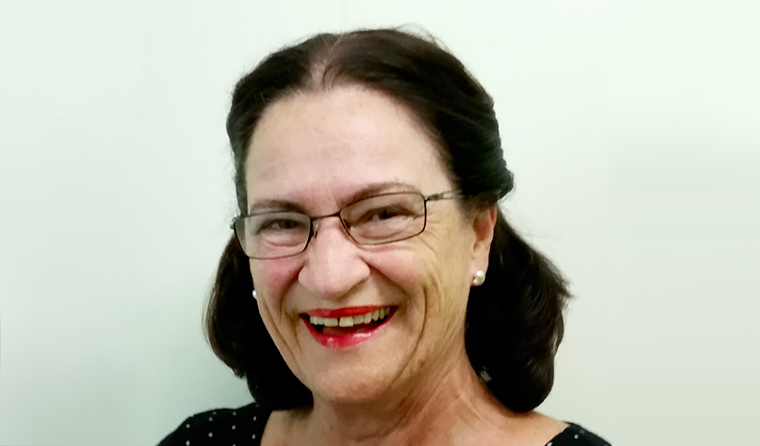Feature
A dignified death: An update on caring@home
The national project, designed to assist carers providing palliative care to loved ones in their home, was launched a year ago.
 The caring@home project provides resources to support lay-carers and health professionals help people who wish to die at home.
The caring@home project provides resources to support lay-carers and health professionals help people who wish to die at home.
‘With our ageing society, more and more people are facing death.
‘We need to make that death as dignified and as comfortable as possible for them, in the environment of care where they want to be.’
These are the words of Professor Liz Reymond, project lead, GP and specialist palliative care service provider, explaining the motivation behind the caring@home project that was launched nationwide just over a year ago.
‘Since then we’ve been working nationally to get the [caring@home] resources out,’ she told newsGP.
‘We’ve had a busy year, but I’m very happy with it all.’
Surveys have found most Australians want to die at home, but the vast majority end up experiencing their final days in hospital where they can access medications that help control common end-of-life symptoms such as pain, agitation, nausea and vomiting.
This situation represented a service gap to Professor Reymond, inspiring her to conduct research into potential alternatives.
‘We know there’s not enough specialist palliative care capacity to allow nurses to be kept in people’s home 24/7, and GPs can’t do that, either,’ she said.
‘So in our early work [we looked at] lay-carers; people related to the person who is dying, or are their good friends, or living with them for whatever reason.
‘We would never coerce anybody into that role. It is absolutely voluntary and for some people it is not for them. But the vast majority are happy to give people symptom relief, if it’s done in a safe way.’
Professor Reymond and her team then designed caring@home, a suite of resources to help teams of health professionals provide training and support for lay-carers to help people die at home.
One of the key areas caring@home covers is the administration of subcutaneous medication.
‘One of the real advantages is that it is a needleless technique, so people who aren’t healthcare professionals are not giving people needles,’ she said.
‘Everything is drawn up and ready to go, and all they have to do is use the system set-up.’
Professor Reymond describes GPs as ‘absolutely central’ to the project.
‘Looking after people at home is absolutely the remit of GPs; they are the keystone of care, they are the ones who manage the care, who know the people,’ she said.
Professor Reymond has found that as palliative care has become more accepted, GPs have played a greater role.
‘In the old days, palliative care was just for cancer, but now we’ve moved to all the other diagnoses: dementia, heart failure, diagnoses that GPs are dealing with all the time,’ she said.
‘So GPs are really becoming much more important in the area of palliative care. And if we can help them and the community to deal better with what is a universal health outcome, then people will get person-centred care.’

Professor Liz Reymond is hopeful the caring@home resources will help provide many Australians with the dignified death they want.
caring@home teams are often led by GPs, who are central in tasks such as recognising when a patient is approaching terminal stage, prescribing medications for subcutaneous care, organising 24-hour on-call services for lay-carers and patients (mandatory for any participants using caring@home resources), and coordinating care with other health professionals.
A year after the project’s launch, Professor Reymond is very pleased with its uptake.
‘We’ve sent out more than 4000 carer packages across the country. Of those 4000 packages, about 48% of those have been sent to rural and regional areas, another 6% to remote areas, and the remaining 46% have gone to metropolitan,’ she said.
‘So I’m really happy that we’ve hit the target areas that we need – probably the most important population that will use these resources are regional and remote people, because of the tyranny of distance.’
Feedback received during the project’s evaluation has been very positive, with one carer telling evaluators that ‘the caring@home information and education were extremely helpful, and made us so much more competent to care for our grandfather in his final days at home’, while a regional GP involved in the project said, ‘teaching families and loved ones to be ready to assist in control of breakthrough symptoms at home is incredibly powerful in my experience’.
The project has also taken on a greater life than anticipated by its designers.
‘Because this is time-limited, we never meant to keep producing these packages,’ Professor Reymond said.
‘However the South Australian, Victorian and Queensland governments have agreed to keep producing these resources at a low price for other services to get them.’
Professor Reymond deems the project’s progress so far a success, and hopes it will continue to be integrated into wider implementation of palliative care in the community.
‘You can’t just have a terminal care package like this and have it stand alone. It needs to be delivered within an overall framework of care,’ she said.
‘Most people are dying an expected death, and if a death is expected, we can plan for it from an early stage.
‘That framework starts with advance care planning: What’s important to you? What do you want as your health deteriorates? What do we need to know about your wishes?
‘As the person deteriorates … if they get another pneumonia they don’t want antibiotics for, how will we care for them?
‘And then finally, it’s the terminal care package, and that’s where caring@home comes in – and GPs are pivotal, they are critical to that whole process.’
Log in below to join the conversation.
carers caring@home end of life healthcare resources pain management palliative care
newsGP weekly poll
Are you interested in prescribing ADHD medication?